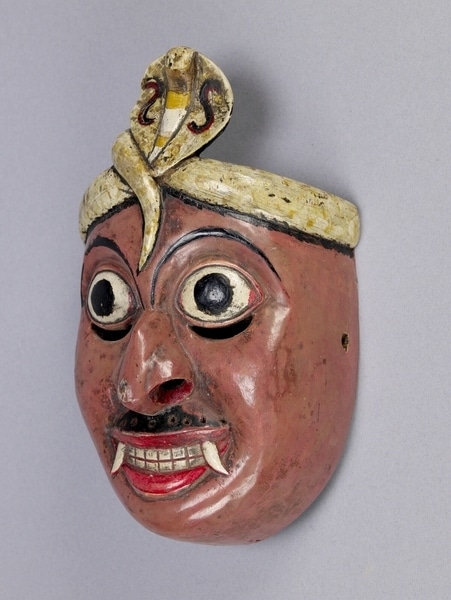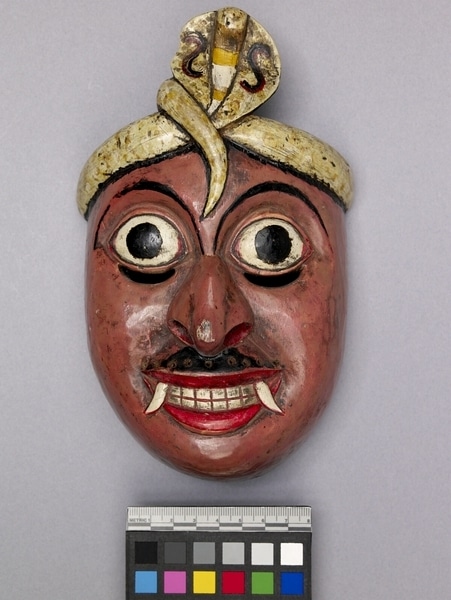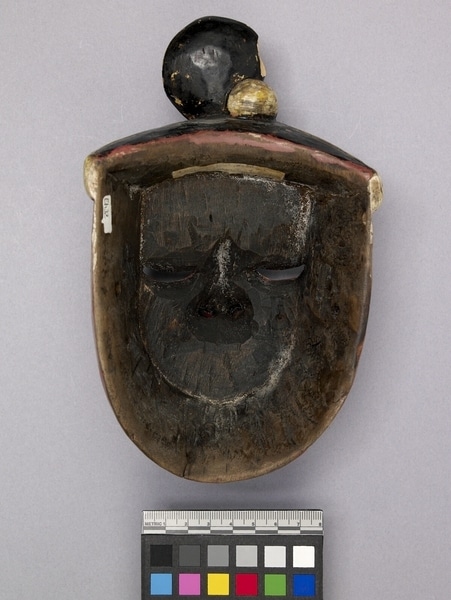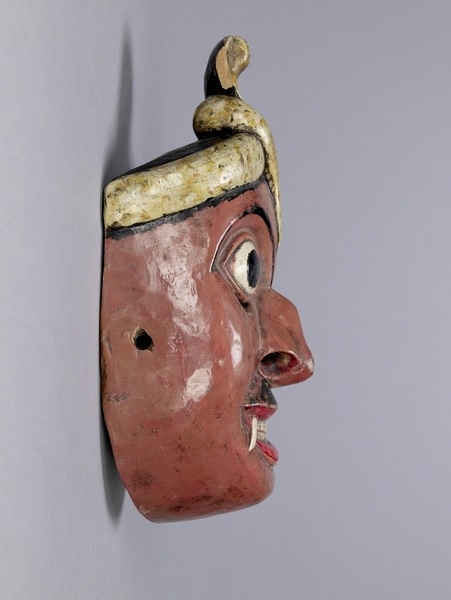Mask Item Number: Eh32 from the MOA: University of British Columbia




Description
Mask depicting Naga Sanniya (who represents bad dreams associated with snakes) with a dark pink face that has wide open eyes, each with a crescent-shaped slit underneath, a narrow bent nose with flared nostrils, arched black eyebrows, a small black moustache, and thin red lips open in a grin that exposes the teeth and outward curving fangs. The headdress resembles a turban in cobra form with the head protruding from the centre top of the mask and the tail wrapping around its body and ending between the eyes. The reverse has a label reading, "Naga - bad dreams conn. with snakes."
History Of Use
Worn during curing ritual of the Sanni Yakuma ceremony, part of the Tovil series of dramas performed by Sinhalese ritual specialists and dancers. The Sanni Yakuma is intended to combat diseases and afflictions caused by the Sanni group of demons. These consist of 18 or more apparitions of the chief demon, Maha-kola-sanni. The officiating healer honours Buddha, then appeases the demons with offerings, dancing, and chanting. This mask represents Naga Sanni, one of the 18 demons.
Cultural Context
exorcism
Iconographic Meaning
Cobras, or nagas, belong to a class of demonical beings. Resting across the forehead, the end tip of the snake is symbolic of bad dreams of snakes. Red-brown colour of face is associated with demons, as are the fangs.
Item History
- Made in Sri Lanka before 1978
- Collected during 1978
- Owned by Jason Schoonover before February 10, 1981
- Received from Museum of Anthropology Shop Volunteers (Funding source) and Jason Schoonover (Seller) on February 10, 1981
What
Who
- Culture
- Sinhalese
- Previous Owner
- Jason Schoonover
- Received from
- Museum of Anthropology Shop Volunteers (Funding source) and Jason Schoonover (Seller)
Where
- Holding Institution
- MOA: University of British Columbia
- Made in
- Sri Lanka
When
- Creation Date
- before 1978
- Collection Date
- during 1978
- Ownership Date
- before February 10, 1981
- Acquisition Date
- on February 10, 1981
Other
- Condition
- fair
- Accession Number
- 0704/0031